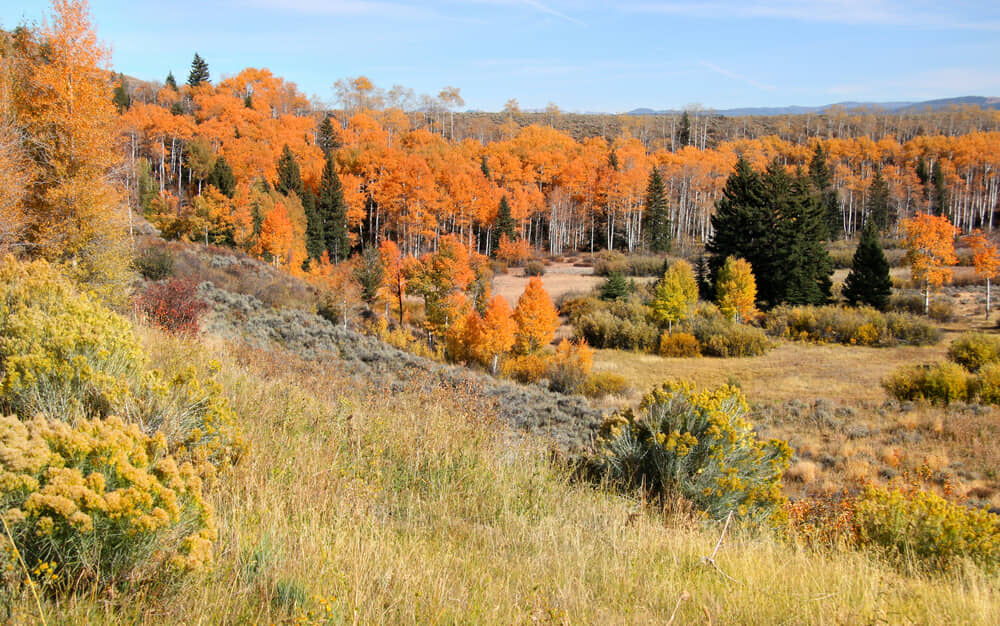Yellowstone is well known for its summer crowds, but September isn’t far behind them in popularity. It is a beautiful time to enjoy the crown jewel of America’s national park system.
Fall Wildlife
As winter approaches, bears are preparing for their long winter hibernation. In autumn, they may gain more than three pounds per day approaching hibernation. The bears favorite food in September and October are whitebark pine nuts.
Autumn is also one of the best times to see and hear the park’s elk. During the rut, male elk seek the attention of females through a deep and high-pitched bugling. While some move out of the park, the largest herd usually spends the winter in the Lamar and Yellowstone river valleys.
The bighorn sheep rut is also one of the most spectacular wildlife mating exhibitions. It sees rams surge toward each other and clash.

Fall Foliage
The best time to see fall color in Yellowstone National Park is usually the end of September and the beginning of October. Most of the park is a coniferous forest but the Aspen trees turn a magnificent gold in this period in Mammoth Hot Springs and the Lamar Valley. Be sure to avoid higher elevations where it is mainly pine and fir trees.
Other Attractions
The Boiling River is one of the few legal thermal soaking areas in Yellowstone. It is located just south of the 45th Parallel Bridge in the Mammoth area. Soaking in the hot spring itself is not permitted, but it is allowed in the river. Fall is one of the best times to take a dip, because the water is no longer high from spring runoff. The hotspot is actually closed in the spring and early summer because the area is dangerous during this period. So bring your swimsuit in the fall!
Weather
The weather in the autumn varies greatly in Yellowstone. Days can range between 20 and 65 degrees Fahrenheit, with temperatures dropping after the sun sets.
